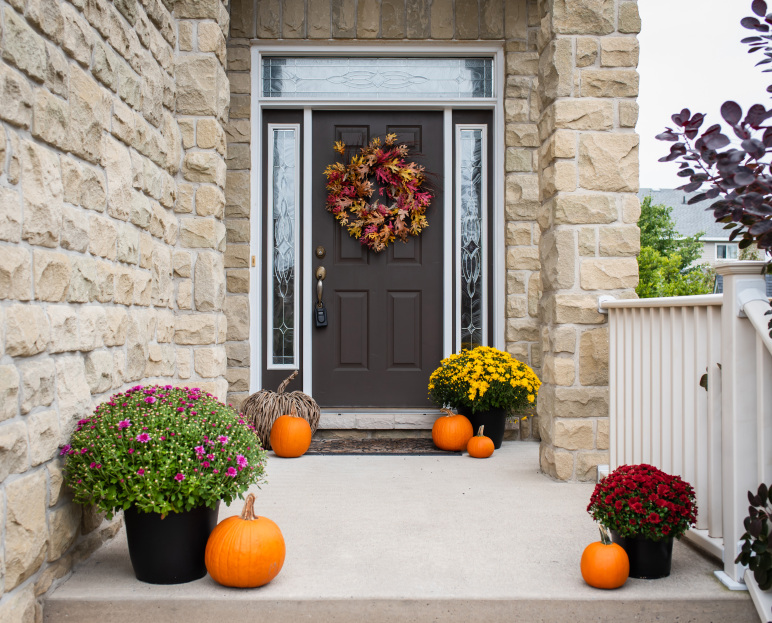
Mums, scientifically known as Chrysanthemums, are charming and versatile flowers that come in a variety of colors and sizes. Whether you're adorning your indoor spaces or sprucing up your outdoor garden, mums can add a burst of color and beauty to any setting. To help you achieve the best results with these lovely blooms we outline all the care needed to keep your mums thriving!
Chrysanthemums are classified into two types: garden and florist chrysanthemums. Garden mums are robust perennials that will reappear annually if planted in a well-lit garden area. They are usually sold for outdoor use. Florist mums, on the other hand, lack hardiness. These attractive plants are ideally cultivated as yearly blooms for autumn adornment -- afterwards, they can be composted. These are usually found in decorate pots inside stores. These types of plants are meant for indoors and cannot survive if planted outside in a garden during winter. In this blog we will focus on indoor potted “florist” mum care.
Indoor mums thrive in bright, indirect light. Place your potted mum near a south-facing window where it can receive several hours of sunlight each day. If direct sunlight is too intense, consider placing it further away from the window or move it somewhere that gets in-direct sunlight.
They prefer cooler temperatures ranging between 60°F to 70°F (15°C to 21°C). Avoid placing them near heaters or drafty areas, as sudden temperature changes can stress the plant.
Maintain a moist/boggy soil but avoid overwatering. Water the plant when the top inch of the soil feels dry to the touch. When watering into a pot without drainage holes, be sure to discard any excess watering sitting at the bottom of your pot, Avoid getting water on the leaves, as this can encourage pests.
Feed indoor mums with a balanced liquid fertilizer every 2-3 weeks during the growing season (spring and summer). Reduce or stop fertilizing once the blooming period ends.
Chrysanthemums prefer well-draining soil that is rich in organic matter. A high-quality potting mix formulated for flowering plants or a blend of equal parts peat moss, perlite, and compost is ideal. Ensure that the pot has drainage holes to prevent waterlogging, which can lead to root rot. When repotting, choose a container that provides ample space for root growth, but avoid oversized pots, as they can hold too much moisture.
To encourage bushy growth and more blooms, pinch back the growing tips when the plant reaches about 6 inches in height. This can be done a few times until mid-summer.
Both indoor and outdoor mums can be susceptible to pests like aphids, spider mites, and powdery mildew. Regularly inspect the plants and treat them with insecticidal soap or neem oil as needed.
In most cases, caring for container mums is a short-lived project. This is because they flower for 3 to 4 weeks and then stop. Indoor conditions are not ideal for them to re-bloom and creating the correct conditions to make them re bloom can be tedious. For this reason, most indoor gardeners simply compost the plants after they are done flowering.
Chrysanthemums are toxic to pets and can cause vomiting and diarrhea. If your pet has eaten a chrysanthemum, please call your vet or local animal hospital immediately. Conclusion Whether adorning your living room or enhancing your garden, mums are a splendid addition that rewards you with a profusion of colorful blooms. By understanding their specific care needs, both indoor and outdoor mums can flourish and delight you with their beauty season after season. Remember, each mum variety might have slightly different requirements, so tailor your care routine accordingly. With the right attention and care, your mums will undoubtedly thrive and become a focal point of admiration.